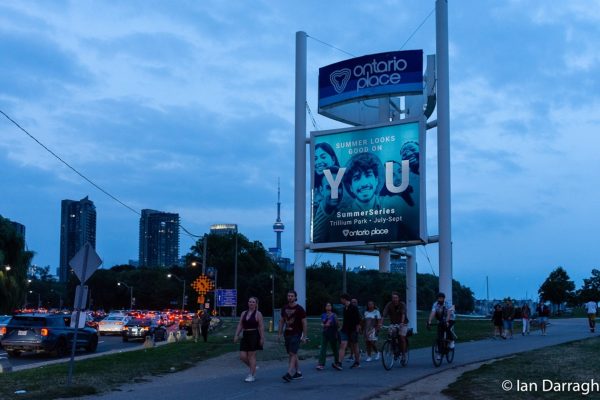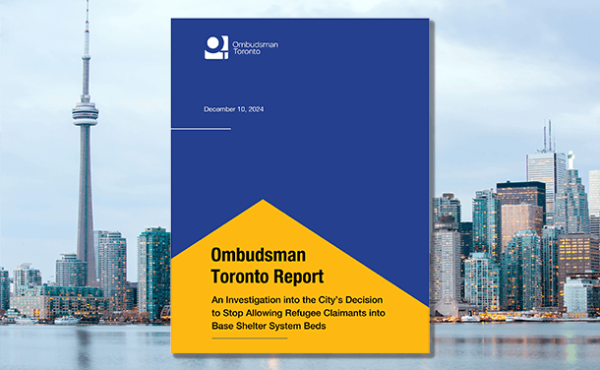Sequel to Part 1 of “What’s really happening at Ontario Place?“
Ontario Place was conceived by Conservative Premier John Robarts in 1968 as an urban park for families that would showcase the best that Ontario has to offer. Now all these years later, the government of Premier Doug Ford has signed long-term leases with two foreign-controlled companies to redevelop and manage two key elements of Ontario Place. Therme Group is based in Austria, while Live Nation — which has a monopoly to manage Ontario Place’s two music venues — is based in Beverley Hills, California. An international conglomerate which also owns Ticketmaster, Live Nation has no incentive to showcase up-and-coming performing artists from Ontario — or Canada — at the two venues at Ontario Place that it manages, Budweiser Stage and Echo Beach. Live Nation, which trades on the New York Stock Exchange, has a mandate to maximize profits for its shareholders, which includes the Saudi Arabian government, which purchased a 5.7% stake in the company through its sovereign wealth fund in 2020. Live Nation has been the subject of numerous lawsuits and Congressional investigations in connection with 10 fatalities and 5,000 injuries that occurred at the Astroworld Festival in Houston in 2021; and at other Live Nation concerts. In addition, Live Nation has been the subject of lawsuits alleging anticompetitive conduct in connection with its ownership and management of Ticketmaster – which gives Live Nation a monopoly in both managing concert venues and selling tickets for those same venues. I requested an interview with a representative of Live Nation but received no response. I asked the Ontario Ministry of Infrastructure about the terms and length of the lease it has signed with Live Nation, and received no response. So we don’t know how long Live Nation will have a monopoly on the two concert venues at Ontario Place.
“Our better idea is to build on the legacy we have inherited,” says Ken Greenberg of Ontario Place for All. “Merge Ontario Place and Exhibition Place — put them together and you have 350 acres.” With its 5,500 surface parking spaces, Exhibition Place would be the logical location for a proposed spa and waterpark. As Alex Bozikovic, The Globe & Mail’s architecture critic, noted in his column on August 28, 2023, except during the Ex and the Royal Winter Fair, the 192 acres of Exhibition Place are underutilized. The city agency that manages Exhibition Place is looking for in-fill projects to maximize the vacant land on the site. In addition to building another hotel, why not also locate Ford’s spa and waterpark there? Then there would be no need to clear-cut 850 trees on the West Island of Ontario Place, and destroy the cleanest beach in Toronto.
There are two mysteries about this whole project that continue to stump me. When Premier Ford announced his legacy Ontario Line transit project in 2019, unilaterally changing the City of Toronto’s Downtown Relief Subway plan (wasting millions of dollars already invested by the TTC), he touted that the Ontario Line would connect two stellar attractions – the Ontario Science Centre and Ontario Place. Hence the name – the Ontario Line. The last time I was at Eglinton East and Don Mills, the Eglinton Crosstown LRT station at that intersection was still named “Science Centre,” and the Metrolinx website still has maps showing the “Science Centre” transit station. Why did Ford suddenly pivot and decide to demolish the Ontario Science Centre and move it to Ontario Place? Without any explanation, the Ontario Science Centre morphed from a “world-class attraction” into a building that is so in need of repairs that it has to be demolished. Why spend billions to extend the Ontario Line as far north as Don Mills and Eglinton if the star attraction at the northern terminus of the line is to be relocated?
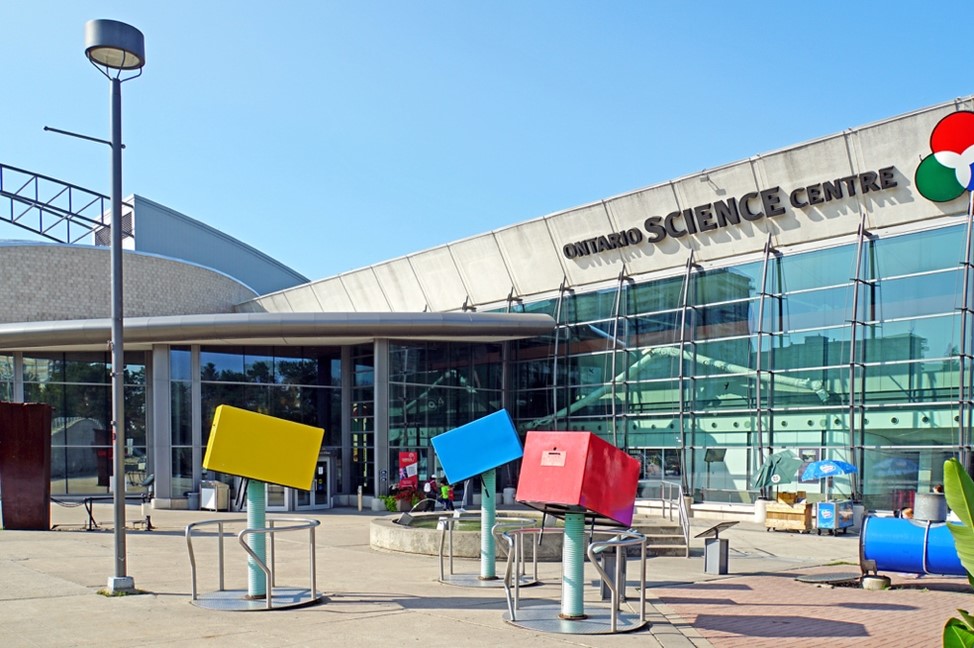
I visited the Ontario Science Centre this summer and it was a beehive of activity, with school buses dropping off excited kids and families arriving by car, van, bus and on foot. I walked down into the West Don Valley Ravine behind the Science Centre to see first-hand how steep the incline is from Don Mills Road. The Ford government’s rationale for demolishing the Science Centre is that the land is needed for housing. But the Toronto Region Conservation Authority says most of the site is in a hazardous flood zone. There is a flat plateau along the west side of Don Mills that is currently used for parking, and part of that land could be used for affordable housing to take advantage of the proximity to the Eglinton Crosstown and Ontario Line transit stations. This is a proposal that Ontario Place for All supports. Ford’s rationale that the Ontario Science Centre has to be bulldozed because of the “housing crisis” echoes his rationale for building housing on the Greenbelt. The auditor general demolished the validity of that argument when she verified with municipal planning staff at cities in the GTA and the Ford government’s own Housing Affordability Task Force that there is already enough land zoned for housing outside the Greenbelt to build 1.5 million new homes in the next decade.
There was a lack of research into what land is actually available for development on the Science Centre site before the Ford determined that the Science Centre should be demolished. There was no consultation with the Flemingdon Park or Thorncliffe Park communities. And it turns out that much of the Ontario Science Centre sits on land owned by the Toronto Region Conservation Authority (TRCA). The Authority and the City of Toronto leased the property to the Ontario Science Centre for 99 years – the lease expires in 2064.
Eshrat Meshkoti, a member of the grassroots group, Save Our Science Centre, a refugee from Iran and a resident of Flemingdon Park, said the Science Centre is an important employer in the neighbourhood, and a source of local pride. She said many young people in Flemingdon Park and Thorncliffe Park have been inspired to pursue careers in science and engineering as a result of visits to the Ontario Science Centre.
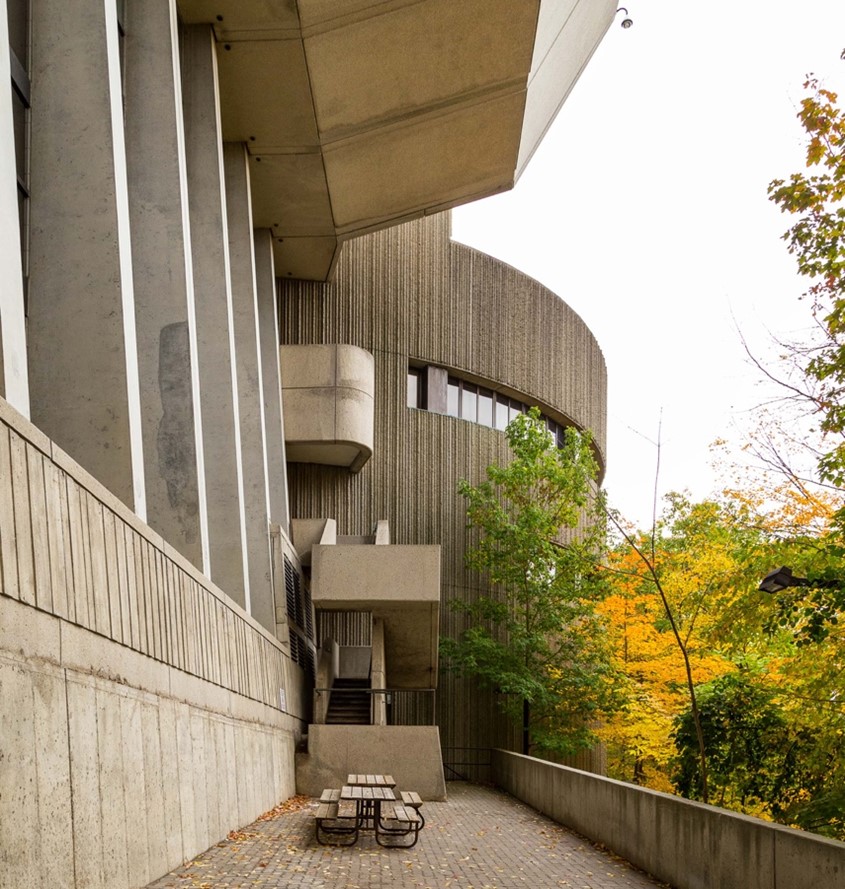
There is no need to demolish an innovative building that is only 54 years old by one of Canada’s foremost architects, Raymond Moriyama, contends Lesley Lewis, CEO of the Ontario Science Centre from 1998-2014. She notes that about 3,000 science centres have copied the interactive learning approach to science pioneered at the Ontario Science Centre. Why would we demolish a science centre so admired around the world, she asks?
When the decision was announced in April 2023 to move the Science Centre to Ontario Place, Minister of Infrastructure Kinga Surma said her department had done a business case that proved that it was financially more prudent to demolish the current Ontario Science Centre and build a new one, rather than renovate the existing Science Centre on Don Mills Road.
I asked Minister Surma’s office twice to provide a copy of its business case for bulldozing the Science Centre, on August 16 and 28, 2023, but none was provided. The Ford Government has been mum about its plans to build affordable housing on the site of the Science Centre since the TRCA issued a press release in April 2023 stating that the Authority and the city own that land and that there is still 41 years remaining on the lease.
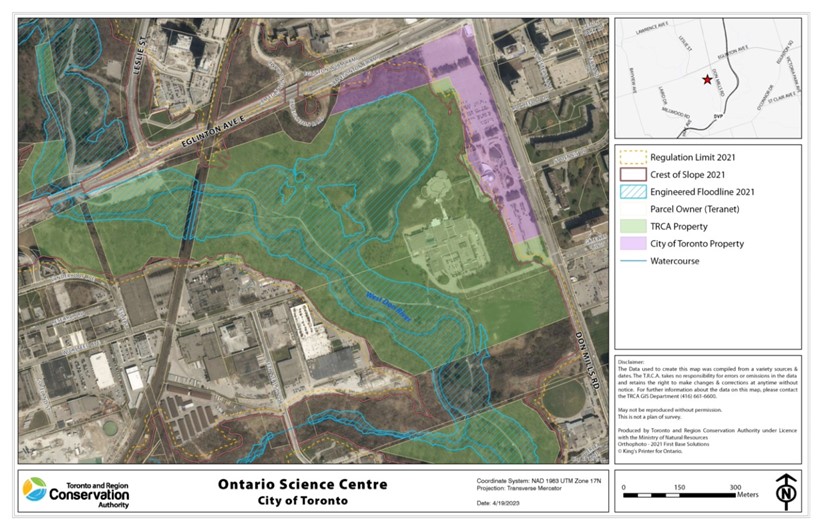
What Minister Surma didn’t mention in April is that the new Ontario Science Centre at Ontario Place will be half the size of the current Science Centre on Don Mills Road. Infrastructure Ontario launched a request for proposals (RFP) in June and the deadline is September 6, 2023. The RFP includes the construction of a five-storey underground garage at Ontario Place with 2,100 parking spaces. This is about the same size as the parking garage under Toronto City Hall. The down-sized Ontario Science Centre will sit atop the parking garage, and according to a diagram included in the RFP, visitors will have to go down one level to access the renovated pods at Ontario Place.
According to the RFP, the new Ontario Science Centre at Ontario Place will not be large enough to accommodate three-star attractions available at the current Science Centre: the rainforest immersive experience; the outdoor adventure playground; and the planetarium.
The estimated cost of building this five-storey underground parking garage is $400 million – which is to be funded by taxpayers. The construction cost could be much higher because the five parking levels will be below the water table – the garage will be right on the shoreline of Lake Ontario in an area that is landfill. I figure the garage will have to have emergency pumps in case of a leak in the garage’s waterproofing membrane. All waterproofing has a lifespan, and eventually it will have to be replaced, which will be very expensive given how high the water table is at Ontario Place. And in recent years, the level of Lake Ontario has been rising.
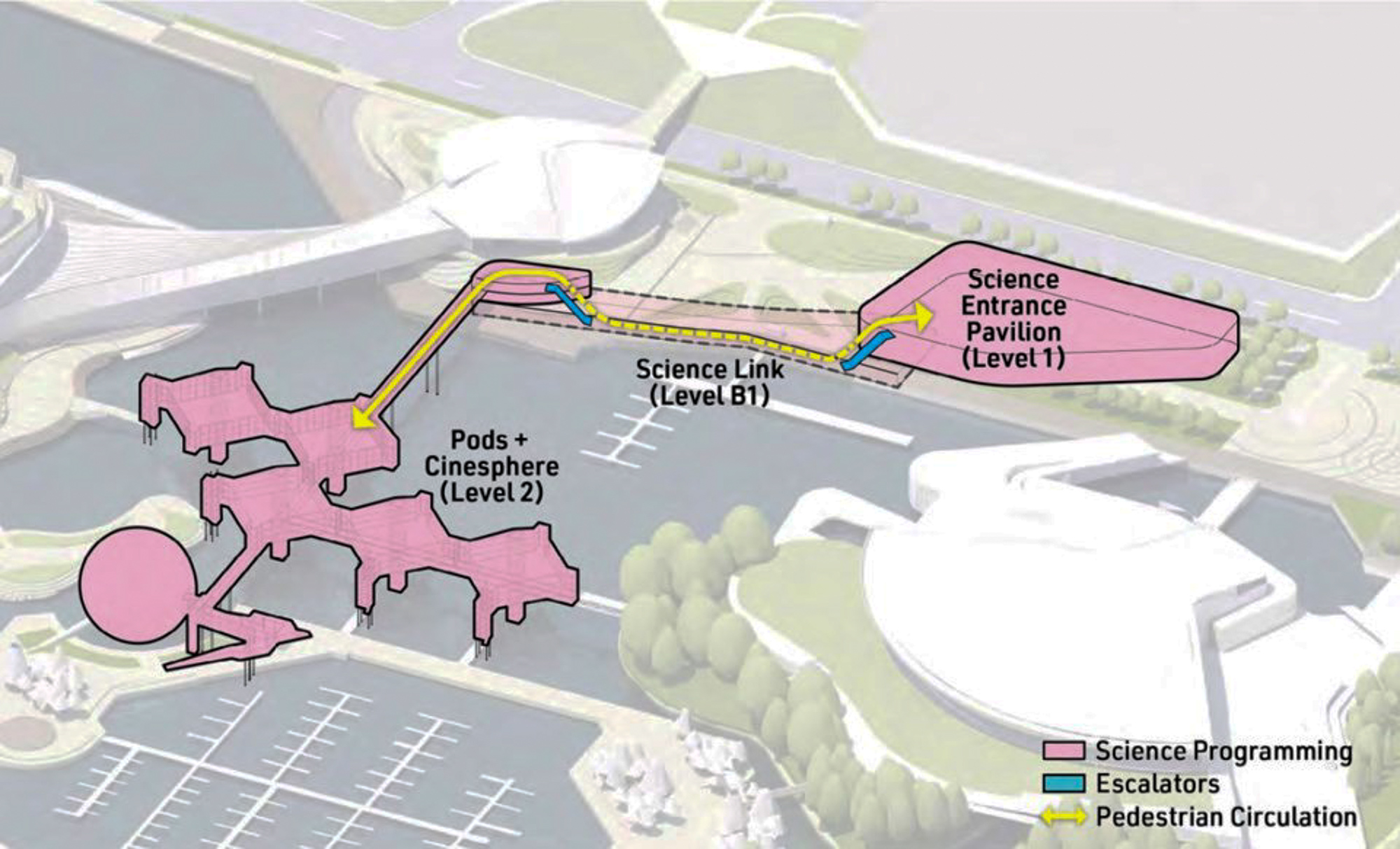
Ontario Place for All contends it would make more financial and environmental sense to renovate the existing Ontario Science Centre which already has adequate parking, and will be served by two new transit stations – the Eglinton Crosstown LRT and the Ontario Line subway. The group suggests creating a satellite Ontario Science Centre exhibit using the existing pods at Ontario Place for interactive displays about Lake Ontario and freshwater biodiversity. Science-themed field trips for kids to explore the flora and fauna of Ontario Place could be offered to dovetail with Ontario Science Centre exhibits and talks.
So why did the Ford government — without consulting the local community, City of Toronto or TRCA —decide to demolish and move half the Ontario Science Centre? Minister Surma is mum, so we can only speculate. Ontario for All believes it was to provide a rationale for building the massive parking garage at Ontario Place. I think the Ford Government also wanted to add a veneer of educational programming at Ontario Place to counter the vocal criticism of the private spa that smacks of a facility for the privileged. Moving half the Science Centre also gives the Ford government a reason to repurpose the iconic pods designed by Eberhard Zeidler. What is clear is that the Ford government is rushing the whole process by issuing the request for proposals for the parking garage and shrunken Science Centre before the City of Toronto has approved the design proposal. The city owns 16 acres of land where the parking garage is to be located, so the province will have to get approval from the City of Toronto or proceed by expropriation.


I still wonder about the need for a huge garage. There are currently two gigantic surface parking lots at Ontario Place along Lake Shore Boulevard. I asked Ontario Place how many cars these lots can accommodate, and got no answer. My guestimate is there is currently space to park at least 1,500 cars at Ontario Place in the existing parking lots. Exhibition Place has another 5,500 surface parking spots. The Ontario Line will have its southern terminus at Exhibition Place, and there will be all-day GO trains serving a newly expanded transit hub. Given the huge investment to upgrade access via public transit to Ontario Place, why invest $400 million plus in a huge underground parking garage?
On August 22, 2023, Therme Group released artist’s drawings and video showing a revised concept for its spa and waterpark. (See Part One of this article.) The new design proposal was in response to comments from the public and City of Toronto planners that the huge glass structure the size of the BMO soccer stadium was too overwhelming for the site. Now the spa has been divided into two pavilions, with walkways and greenery on the rooftops and the height of the roof has been reduced by 25%.
What we have so far are artist’s concepts, not architectural drawings. The five-storey garage and the expanded Budweiser Stage are not visible in the drawings, so it’s hard to assess the overall redesign of Ontario Place until Infrastructure Ontario provides a detailed site map.
The principal architect for the Therme spa project, Gary McCluskie of Diamond Schmitt, said “With this redesign we’ve added four more acres of public park by putting it on top the building. You’re not actually going to see the difference between park space on land, or on the roof. We’ve woven trails and terraces on the roof so it all feels like one space. We’ll be resubmitting the design to the city, and we’ll have more public consultations.”
I asked McCluskie why the Michael Hough Beach on the West Island is not being preserved. He underlined that Diamond Schmitt Architects is working with a consortium of specialists, including landscape architects, shoreline engineers, and environmental biologists, who are working to redesign Ontario Place for the next 50 years.
“Much of Ontario Place is prone to flooding as Lake Ontario has been rising in recent years,” he said. A key aspect of the Ontario Place redevelopment is to raise the height of Ontario Place’s artificial islands, and reinforce the shoreline with armour-stone to protect the shoreline from erosion. Where Michael Hough Beach is now will still be accessible to the water, but the current pebble beach will be replaced by huge blocks of stone that step down to the water, he said. He believes the western shore is a better site for a large sand beach because it can be protected from waves by a breakwater.
The genius of Eberhard Zeidler’s design of the pods at Ontario Place is that they sit on giant pylons and are suspended above the water, thus protecting them from flooding. The proposed private spa and waterpark sits at ground level, and is at risk of damage from flooding if storm waves wash over the West Island or large rafts of winter ice pile up on shore.
“We haven’t seen any actual plans yet,” said Ken Greenberg in response to the revised concepts. “These are bird’s eye renderings. The public can’t actually see how the buildings are laid out, how the circulation works. There are some fundamentals which you can’t design around, which are extremely problematic. There’s the 95-year secret lease. The footprint is still the same. About 850 trees will still have to be clearcut for this development. It will take decades to replace those trees. When Ontario Place opened, it cost a dollar to get in. This is not a park. It is a privately managed, accessible open space, on top of an enormous, privately accessed building. To describe it as parkland is really misleading.”
Norm Di Pascale, co-chair of Ontario Place for All, told me he plans to ask Ontario’s next auditor general (Bonnie Lysyk’s 10-year term expires in early September 2023) to investigate the leases with Therme Group and Live Nation. He also wants the new auditor general to investigate whether demolishing the Ontario Science Centre on Don Mills Road in Toronto makes financial sense. Maybe then the public will get some straight answers.
The City of Toronto Planning Department is holding a public consultation on the revised Ontario Place redevelopment design on Thursday, September 7, 2023 at Beanfield Centre at Exhibition Place (105 Princes’ Boulevard, Toronto, ON M6K 3C3). Panels showing the new proposed redesign of Ontario Place will be on display from 3 pm-6 p.m. There will be a presentation and discussion from 6 p.m.–8.30 p.m. when you can provide feedback on the proposals. To register: https://tinyurl.com/yfc2n9md
Addendum (Sept. 11): The City of Toronto is holding a virtual public consultation on plans to redevelop Ontario Place on Tuesday, Sept. 12, 2023, 7pm – 9pm ET. To review the revised design proposals and to register for the virtual consultation: https://www.toronto.ca/city-government/planning-development/waterfront/current-projects/ontario-place-redevelopment/
Ian Darragh is a former editor-in-chief of Canadian Geographic magazine.
Photos by Ian Darragh unless otherwise specified.

